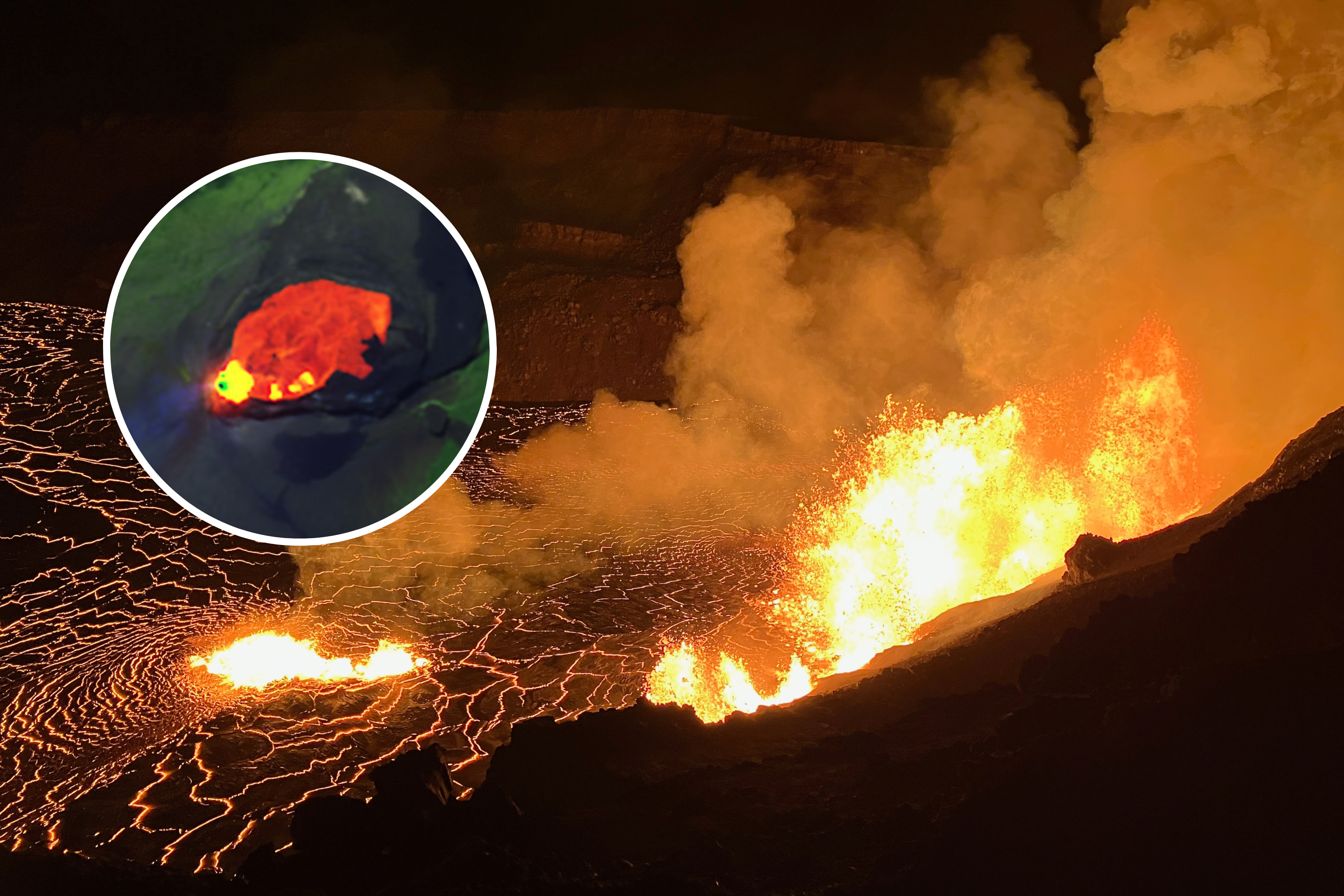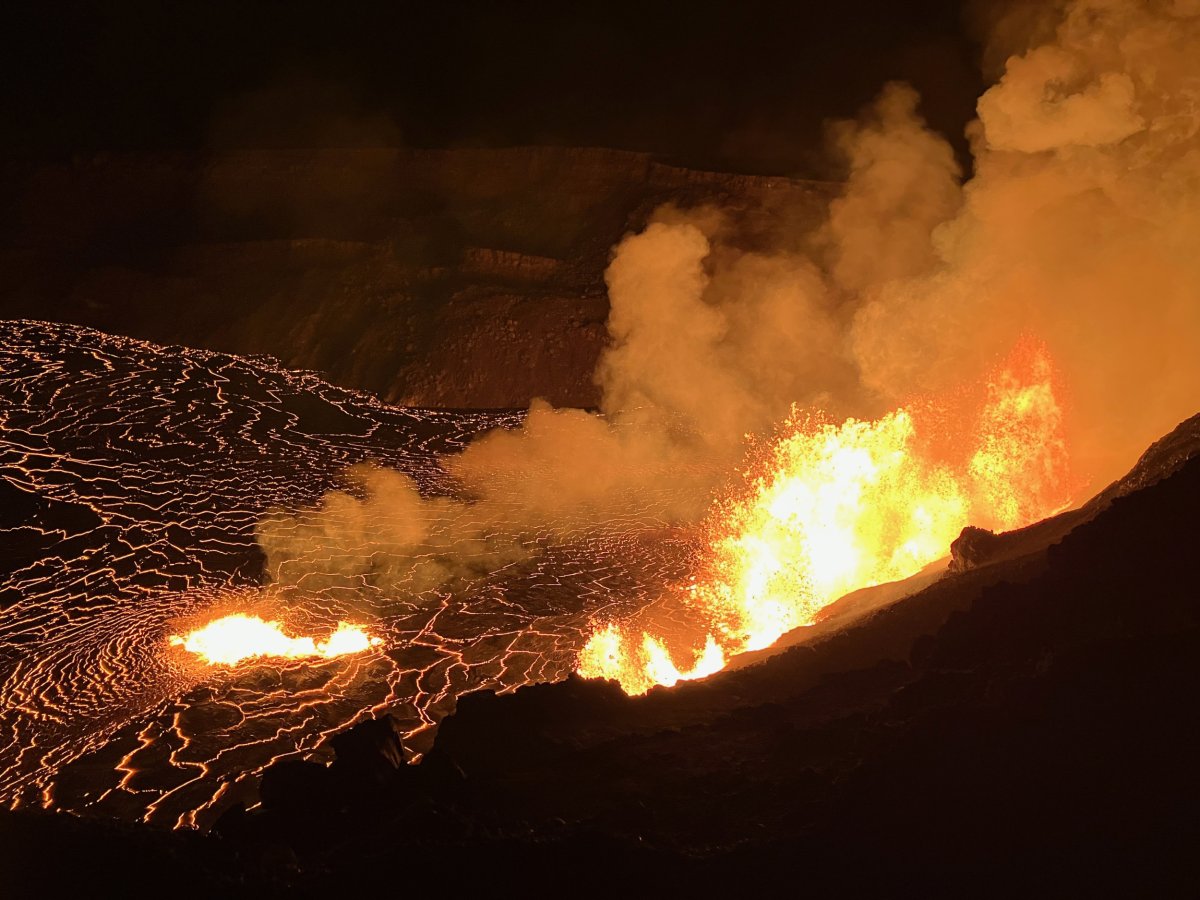
After three months of dormancy, Hawaii’s Kīlauea volcano erupted dramatically on December 23, 2024, spewing fountains of lava from fissures near the southwest wall of Halemaʻumaʻu crater.
Newsweek contacted the USGS Hawaiian Volcano Observatory via email for further comment.
Why This Matters
Kīlauea is one of the world’s most active volcanoes, and its eruptions impact local communities and ecosystems. The release of volcanic gases, especially sulfur dioxide, poses significant health risks, creating a toxic haze known as vog that can drift far downwind.
Beyond the immediate effects, understanding Kīlauea’s dynamic activity helps scientists improve predictions for future eruptions and assess global volcanic processes.

Wanmei Liang/NASA Earth Observatory/USGS
What to Know
An image released by the NASA Earth Observatory from Landsat 8 captured vivid false-color images highlighting the glowing red-hot lava within Kīlauea’s caldera. This ongoing eruption marks the sixth event within the summit caldera, Kaluapele, since 2020.
By the morning of December 23, lava fountains soared up to 300 feet, rapidly spreading over 650 acres with an average depth of 10 feet.
The eruption has since cycled through multiple episodes of activity and pauses, with U.S. Geological Survey reporting active eruptions as of January 3, 2025.
This eruption began after magma chambers beneath Kīlauea showed increased pressurization in late 2024. Lava fountains initially erupted with dramatic intensity, followed by a phenomenon called “drainback,” where lava flows back into the vent, increasing pressure again.
This alternation of inflation and deflation in the magma chambers has caused the eruption to pause and resume multiple times.
Scientists hypothesize that variations in lava gas content and drainback dynamics are driving these stop-and-start patterns. Dense, gas-poor lava forms a “plug” that repressurizes the magma chamber, leading to subsequent episodes of activity.
The satellite image, rendered in false color, highlights the infrared signature of the fresh lava, which appears vividly in shades of red and yellow. On the same day, USGS captured a ground-level photograph showcasing lava erupting within Kaluapele.
Volcanic gases are also visible in the satellite imagery drifting southwest of the caldera, highlighted in blue.

USGS Hawaiian Volcano Observatory
What People Are Saying
The USGS Hawaiian Volcano Observatory said in its update on Thursday: ”The current eruption at the summit of Kīlauea is the sixth eruption within the caldera since 2020. These eruptions in the summit region have lasted for about a week to more than a year in duration. This eruption, like most others, started with vigorous lava and volcanic gas emission but has paused twice, and today shows moderate levels of activity.
“High levels of volcanic gas—primarily water vapor (H2O), carbon dioxide (CO2), and sulfur dioxide (SO2)—are the primary hazard of concern, as this hazard can have far-reaching effects downwind. As SO2 is continuously released from the summit during the eruption, it will react in the atmosphere to create the visible haze known as vog (volcanic smog) downwind of Kīlauea.”
What Happens Next
As of January 3, Kīlauea remains in its third eruption episode, with continued monitoring by USGS.
The volcano’s activity will likely proceed with further pauses and resumptions.
Researchers are particularly focused on unraveling the puzzling interplay between gas content, magma pressure and lava flow dynamics.
Residents and visitors are advised to stay informed through updates from USGS, as volcanic gases and potential lava flows remain significant hazards.
Do you have a tip on a science story that Newsweek should be covering? Do you have a question about volcanic eruptions? Let us know via [email protected].





